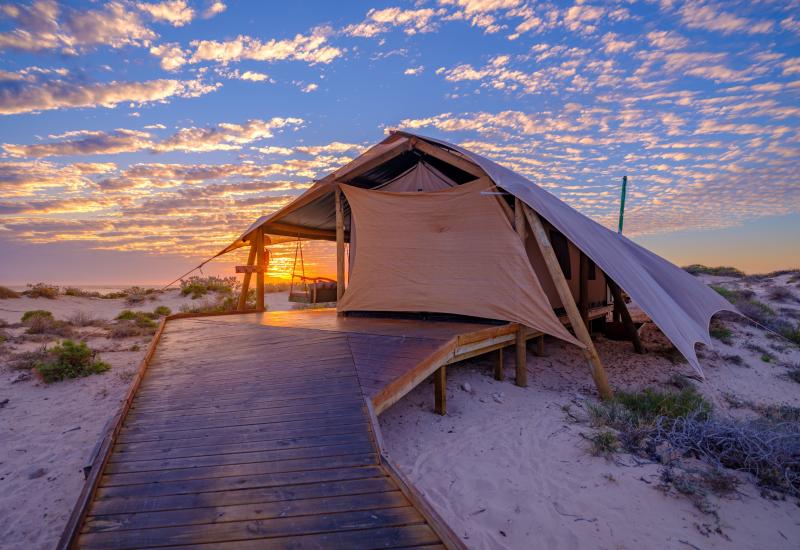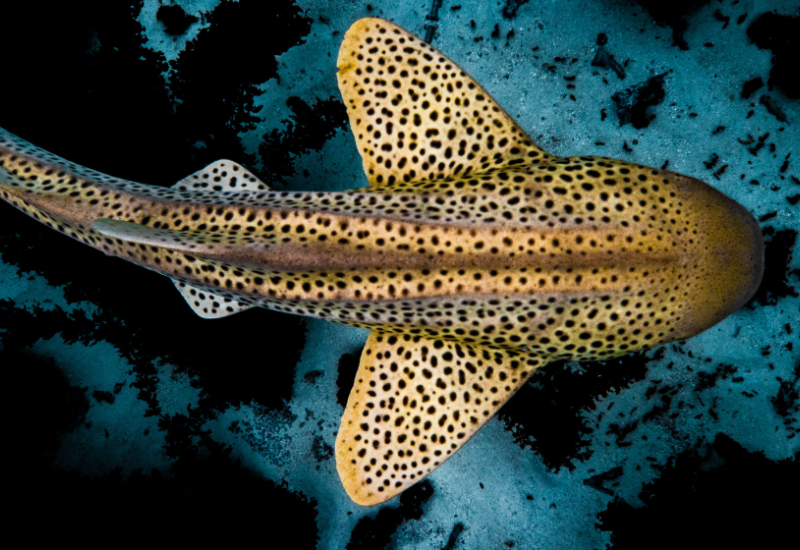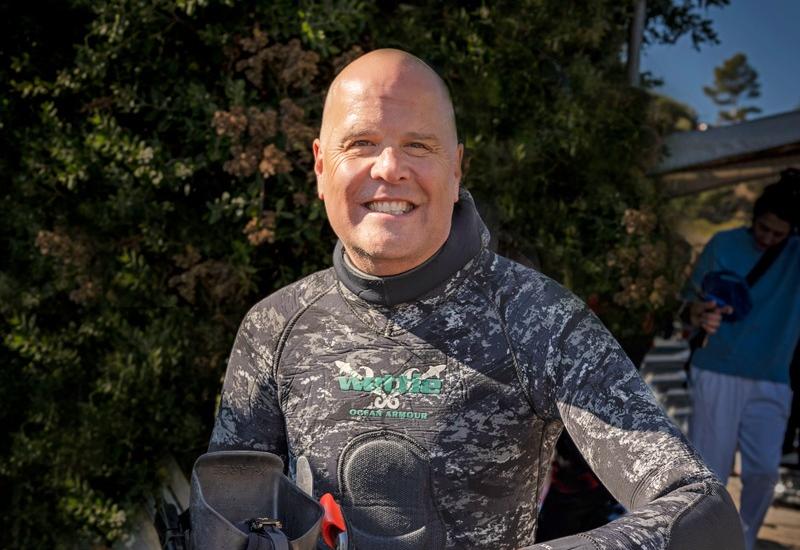Queensland, Australia
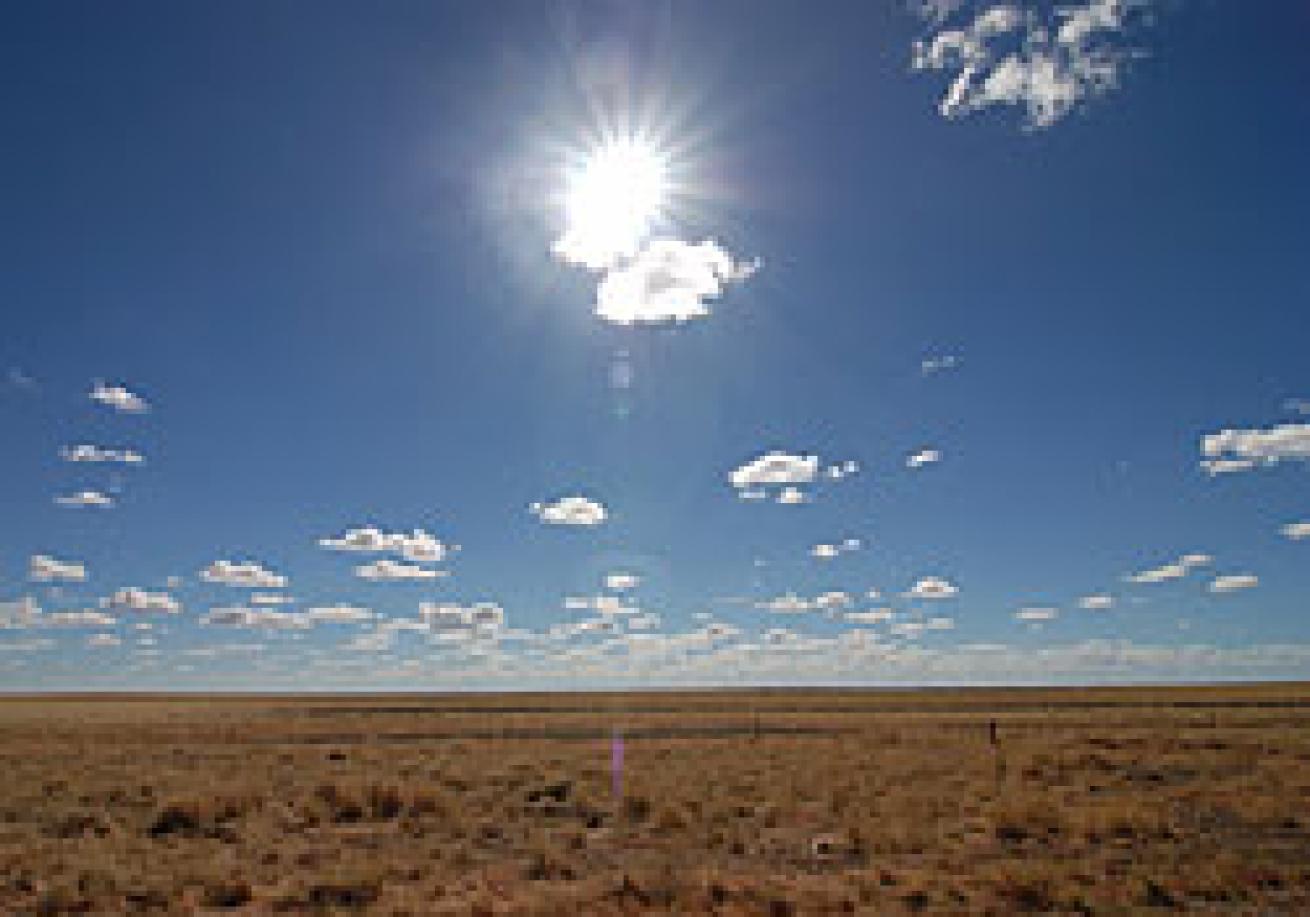
Some people eke out a living from a fluorescent-lighted cubicle, some have the occasion to go on an 18-day dive junket to Queensland, Australia, for work. I have the surreal pleasure of doing both. Now before you call me a rat bastard, hear me out — this is no cakewalk. Not only do I have to endure a week on a live-aboard exploring the Great Barrier Reef and Coral Sea, suffer through an Outback pub crawl, explore the world's largest sand island, and immerse myself in the austere urban chic of Brisbane, I have to convey the entire experience in a couple thousand words to you, our loyal reader. And let me tell you, eight pages doesn't do it justice.
Like a giant isosceles triangle, the geographically diverse state of Queensland spans from just below Papua New Guinea in the steamy, tropical north, to the dry, desolate Simpson Desert in the southwest, to Brisbane's urban sprawl and luscious Gold Coast beaches in the southeast. The long, jagged, easterly edge of Australia's second-largest state is hemmed in by the serpentine Great Barrier Reef — actually made up of more than 3,000 smaller reefs — the world's largest single structure built by living organisms, about the size of Germany. All along this überreef and within the state's borders is a vast playground for divers and nondivers alike, some spots well-known, and others awaiting discovery.
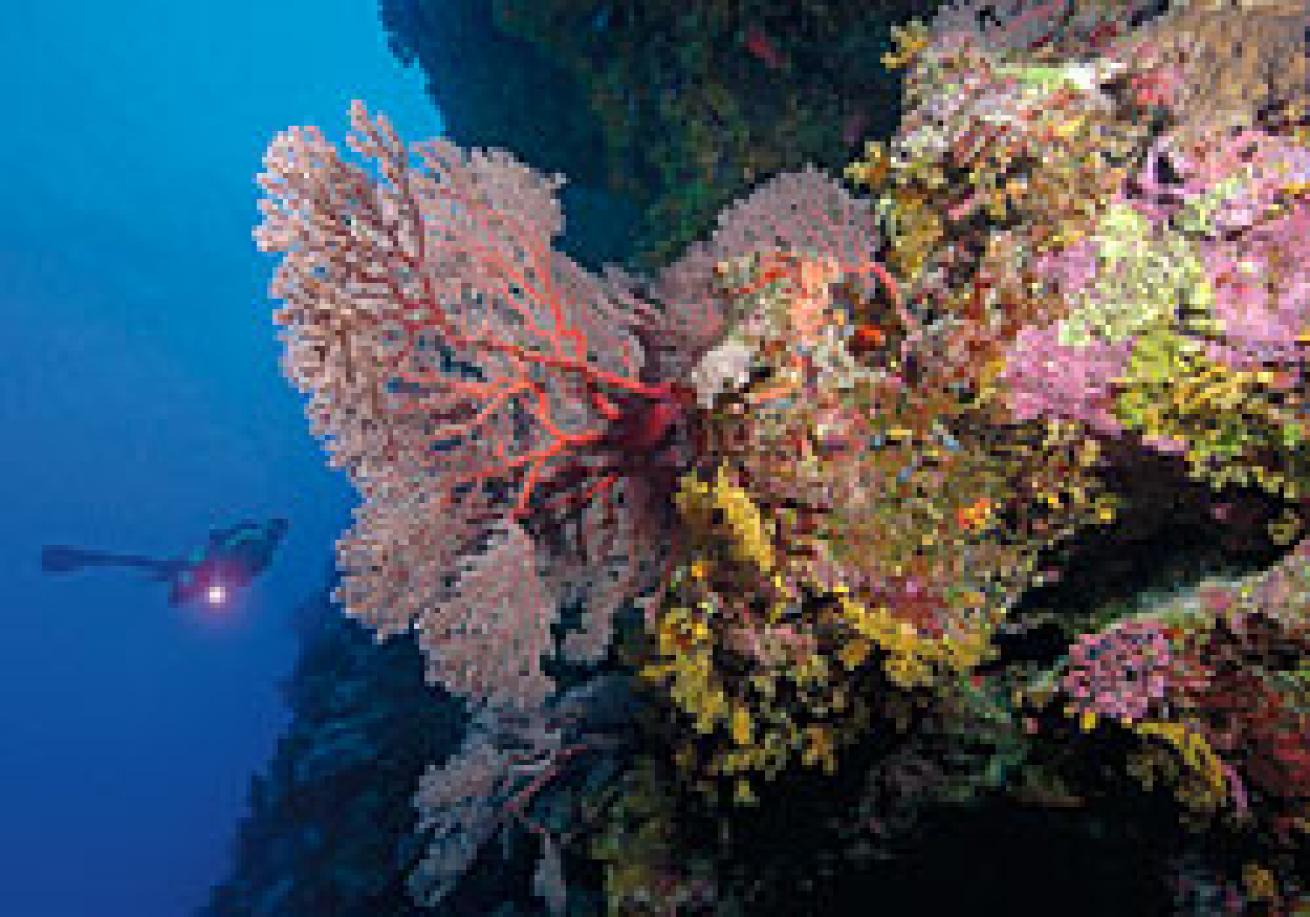
The GBR is on most divers' bucket lists.
I'm a Yank, so my preconceived notions of this vast antipodean continent were born from Crocodile Dundee, The Crocodile Hunter, and a U.S.-based, Australian-themed restaurant chain specializing in deep-fried onions. You sometimes get the sense that many Australians revel in their isolation, as if hoarding this vast, wonderful land all to themselves.
Australia is on the top of most divers' lifetime "to do" list. And when you finally go, you'll quickly realize something shocking about it: It's a wonderful place, friendly, clean, familiar yet exotic, and best of all--everyone seems happy. This especially holds true in Queensland, a place that is coming to grips with the nationwide realization that it's heaven on earth. My assignment ahead of me, I am intent on sampling as much of this state as possible.
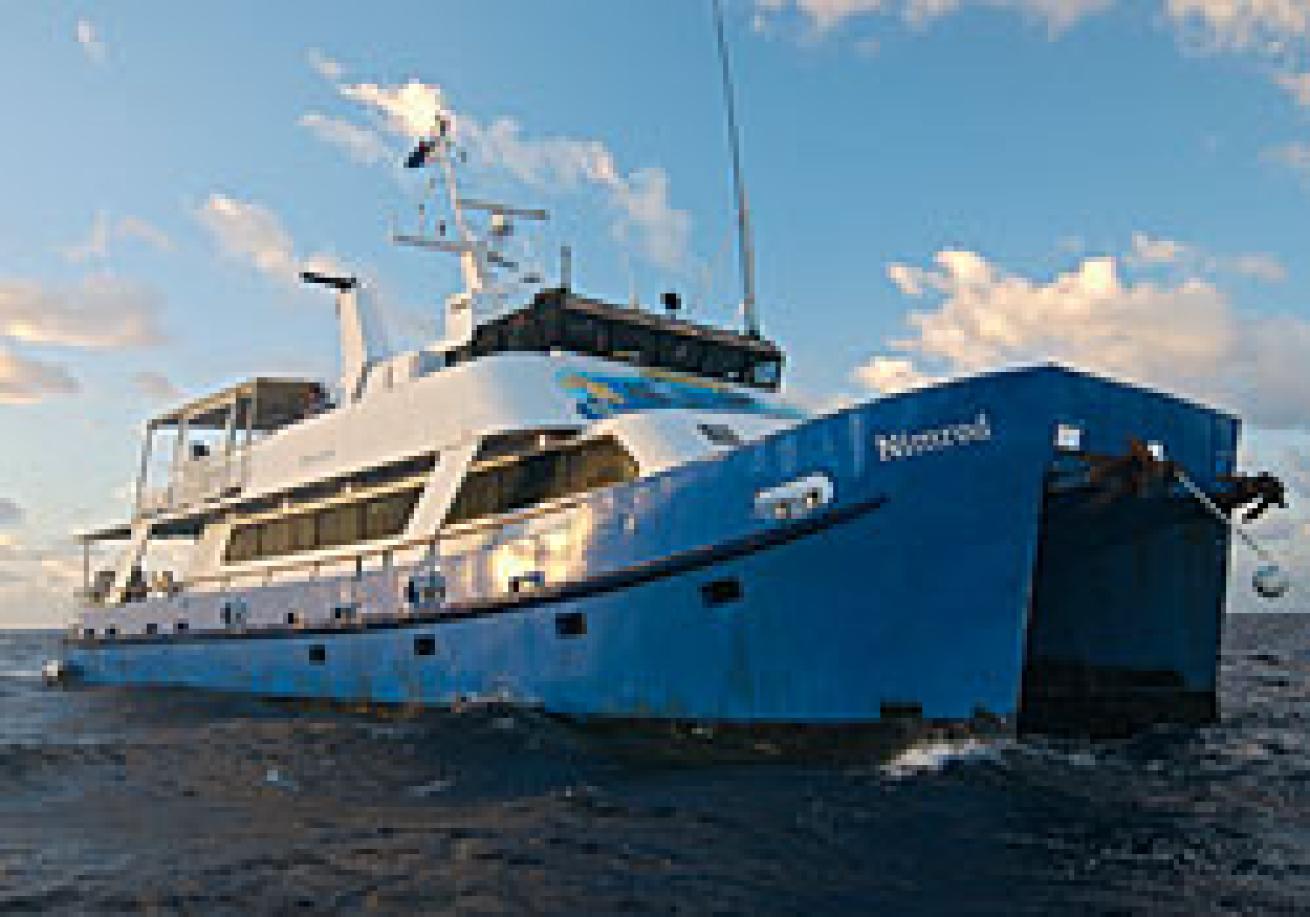
A liveaboard is the best way to explore all the splendors of the Great Barrier Reef.
Cairns & Tropical North Queensland
My journey begins where most American divers' do, in Cairns, self-proclaimed capital of Queensland's "Tropical North." The first thing that strikes me is that it's much better than I remember it. Not that it was bad when I last visited in the '90s, but I recall it seeming more of a haven for backpackers than a hub for divers. It's become the fourth-most popular destination in Australia among international travelers (after Sydney, Melbourne and Brisbane), and it seems more cosmopolitan now, less of a northern Queensland backwater and more of a regional urban center, replete with fancy new hotels, sidewalk cafés, boutiques and coffee shops, hemmed in by the serpentine Esplanade that undulates along its waterfront. The rapidly growing city of nearly 150,000 is not just a destination in and of itself, but a perfect jumping-off spot for countless other adventures, including quaint, nearby Port Douglas, Daintree National Park, Cape Tribulation, Tjapukai Aboriginal Cultural Park and Kuranda Skyrail Gondola Cableway.
Cairns (and to a lesser extent, Port Douglas) is the undisputed hub of Great Barrier Reef dayboat charters (less than an hour from the reef by high-speed cattleboat) and premier live-aboards, serving up trips of three, four, five, six and more nights. Most major Queensland live-aboard fleets call Cairns home, base of operations for Mike Ball. My advice: If you've come all this way and call yourself a diver, you'll want to hop on a live-aboard excursion — doing the GBR by dayboat simply isn't enough. It's like limiting yourself to a small salad at the world's largest all-you-can-eat buffet — pointless.
We fill out some painless paperwork and find ourselves being whisked by bus to the airport to catch a scenic 40-minute flight over the Great Barrier Reef to Cooktown. It's here where we board the live-aboard, greet the crew and settle into our cabin for the night. We've got a full itinerary of diving ahead of us, and I'm still jet-lagged.
Day 1
We awake on the Ribbon Reefs, at a site called Challenger Bay, where we do Dive #1, basically a checkout. It's classic GBR — run-of-the-mill coral bommies and your garden-variety Indo-Pacific reef fish. Dive #2 gets a bit more interesting at Pixie Pinnacle, a picture-perfect needle of an outcropping that's sheathed by critters big and small. It becomes a recurring theme while diving the region's pinnacles: what camera setup to use ... macro or wide-angle? No guesswork on Dive #3 — the world-famous Cod Hole, mother of all big fish encounters and home to a litter of puppy-like potato cod, who, in a work environment, would be brought up on sexual harassment charges as they violate you in search of treats. And finally, Dive #4, our last dive of the day, is Cormorant Reef, a magnificent field of staghorn coral that projects out beyond my range of vision. We decide to forgo the night dive to begin the crossing to Osprey Reef, a remote 15-by-seven-mile remote atoll, and the ultimate destination on the Nimrod's itinerary. It's a bumpy ride, but well worth it when we awake on Day 2 more than 100 miles distant to discover this serene atoll.
Day 2
First on the Osprey docket is Admiralty Cave for Dives #1 and 2, a series of bommies that nearly pierce the surface. Here, sand chutes slope down to a ledge at 100-plus feet. There's a chance of seeing hammerheads here, but we're satisfied with a manta sighting, so I'm not going to complain. Raging Horn is Dive #3, the only one we make from our rigid-hulled tender. We find whitetip reef sharks gliding effortlessly in the ripping current on the wall's lip at 100 feet, in stark contrast to my near-spastic kicking and flailing. We conclude the day with Dives #4 and 5 at a mellower site called Castles, where sandy chutes create a regal playground of swim-throughs and bommies.
Day 3
The boat's bristling with excitement about today's dives, which will include a shark feeding. Tunnels, the appetizer and Dive #1, is a beautiful wall featuring deep swim-throughs that lead you to the atoll's sandy lagoon. Dive #2 is the money shot — North Horn and the long-awaited shark experience. Love these encounters or hate them, they get your blood pumping, and if you're a photographer, make you appreciate the fact that you can now shoot hundreds of shots on a single dive with a housed digital camera system and a big memory card. Two milk crates cable-tied together contain a gory blob of stinky fish heads and tails, which is then lowered down the anchor line to a point above the reef where we're all waiting. It catches on something on the line and stops mid-water, so this impromptu banquet will have to take place in the blue, an opportunity for shark silhouettes with sunbursts. When the stink dissipates, the sharks thin accordingly, and we ascend for our surface interval. Then it's back on the same site for Dive #3, this time a drift dive. Dive #4 in late afternoon and Dive #5 at night (and our last on Osprey) take place at Silver City, a nice wall sliced by cracks, swim-throughs and grottoes, some of which are packed with gargantuan yellow sea fans and packed with fish. After dinner, we secure our salty dive gear, batten down the hatches and swallow our motion sickness meds for the stomach-churning crossing back to Ribbon Reefs.
Day 4
I expected Ribbon Reefs to seem tame after two days on wild Osprey, but was pleasantly surprised to discover several sublime dives. Dive #1 today is Dali's Garden, a nice collection of bommies and a mini-wall adorned with sea grapes. Dive #2 finds us at Andy's Postcard, a pinnacle reaching safety-stop depths and populated by a marine life ID book's worth of critters. Dives #3 and 4 were my trip favorite, Steve's Bommie, which included everything from diminutive nudibranchs to large masses of schooling grunts and trevally. Carine, the Swiss diver in our group, calls this "tennis" diving, because, like watching a match, your head swivels back and forth between the small stuff on the pinnacle and the big stuff out in the blue. Love, set, match!
Day 5
Like kids on Christmas morn, we rise before the sun to do a dawn dive at Temple of Doom, an enormous mesa-like reef formation. Sleepily slipping beneath the lapping waves, I cut off my light to let my eyes adjust to the near darkness. I suck my tank dry while observing the reef morph from silhouettes in shades of dark gray to a full-spectrum color palette in the growing sunlight. Dives #2 and 3 take place at Dreamtime, a wide, sandy sloping plain studded with bommies and flanked by mini-walls. Like the Sunday evenings of my youth, I find myself battling the end-of-weekend depression of the last dive of a live-aboard trip. Dive #4 is on The Kremlin, a triple bommie reminiscent of Moscow's famous spired building, this version blanketed in soft corals and guarded by schools of fish.
After rinsing and stowing our gear, we begin our somber return to Cairns and dry land, threading the needle in and out of reefs along the way. As we watch the sun sink beneath the Great Dividing Range, we reflect on the last five days of diving around the dinner table. By morning, we're in Cairns, and back in civilization.
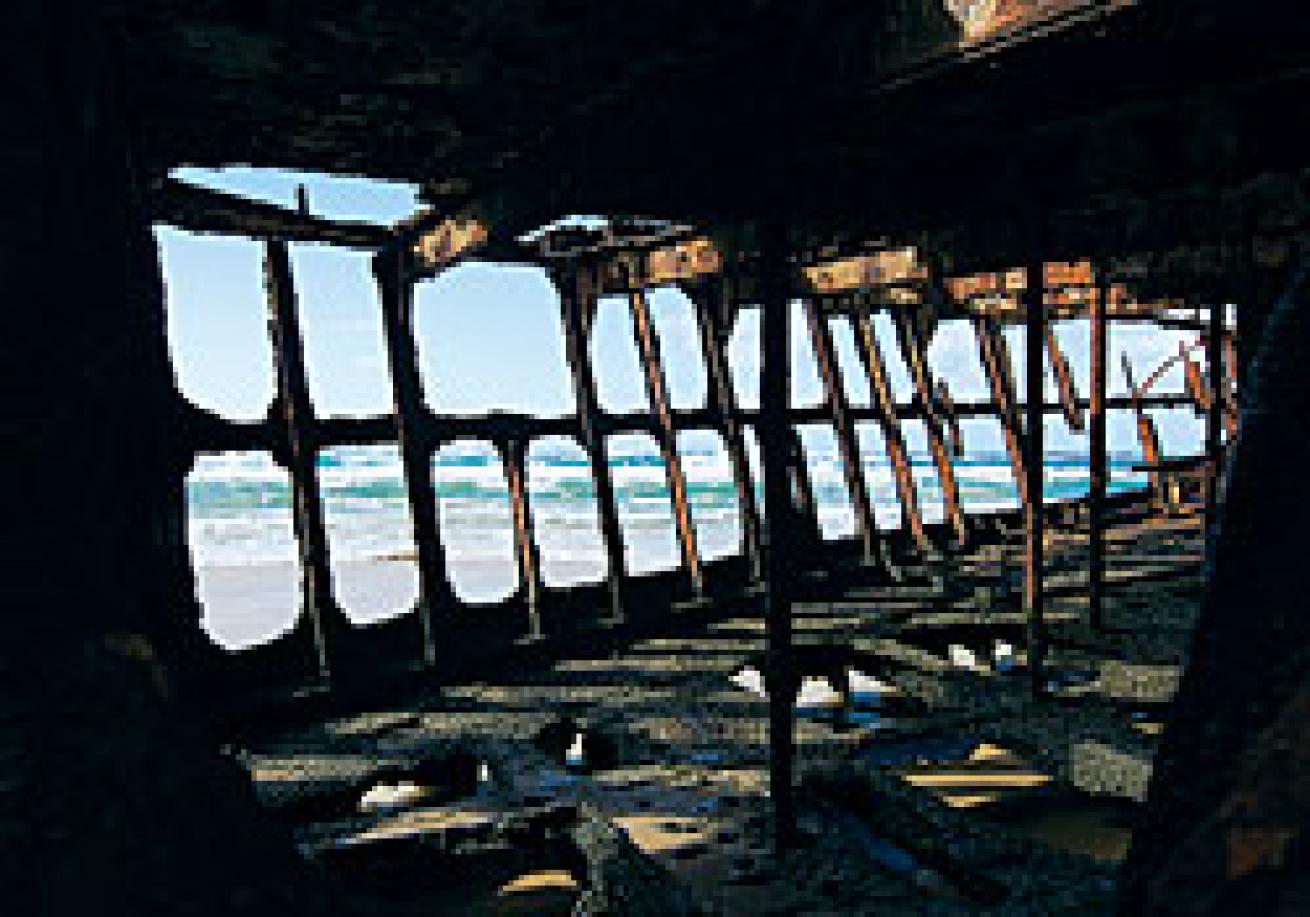
Nick LuceyAstonishing marine life resides under pier structures
Outback
The next morning, we hop a short Qantas flight to Townsville and motor away from the coast as fast as our rental car will take us, heading southwest in search of higher, drier land. We find the antithesis of the lush, wet Great Barrier Reef quite quickly. The "Outback" is a generic term for the (usually arid) rural parts of Australia beyond the oceans, which is, effectively, most of the country. More than 90 percent of Australia's 20-something million people live in cities that cling tenaciously to the island-nation's coast (it is, in fact, among the most urban nations on earth), so there's a whole lot of nothing and nobody to be found in the Outback interior. We drive for periods of up to a half-hour without passing another oncoming car. And that's the sublime beauty of the place: In many ways it's like the ocean--vast, mysterious and seemingly infinite.
Our first stop is the Prairie Hotel where we stop for our first Outback pint. We're greeted by owners Andrea and Tom, and their pets Harry, an alpaca, and Buffy, a water buffalo. Pondering the workers' comp claim, I ask if it's safe to pet the animals. "Harry will spit on you if he feels threatened," says Tom. "And he's a pretty good aim, too." After a light lunch of steak and salad, we resume our drive.
"What's a couple of blokes from a scuba diving magazine doing 'ere?" asks Paul, proprietor of the Tattersalls Hotel and Pub in Winton, as he slides us another round of pots of Four-Ex. "There's not a lot of diving 'round 'ere, mate." And he's right. We're about as far from diving opportunities as Las Vegas, Nevada, is to California's kelp beds. Winton is pure Australian Outback — 360 miles from the nearest lick of saltwater. But we have the ready-made answer: "Americans who travel this far will want to do more than just dive." And after more than two weeks of touring this enormous state, we discover that this is perhaps the understatement of the year. This is all about the Queensland experience, and we're going to savor every last drop. The glasses empty faster than they're replaced, and before too long, we're singing "Waltzing Matilda" with the locals, the unofficial Australian national anthem, which was first publicly performed here in 1895, just a block away at the North Gregory Hotel.
"Waltzing Matilda" is a song about a swagman (hobo) who stole a jumbuck (sheep) and drowned himself in a billabong (waterhole) rather than be incarcerated by police. Sounds simple enough, but it's the source of pride for nearly every Australian, and in many ways, totally encapsulates this nation's spirit. You can't help but notice the country embraces outlaws, rebels and rogues. Take the legend of Ned Kelly, for example, an Irish fugitive dressed in a hastily crafted suit of armor, whose last stand with police ended in a hail of gunfire prior to his incarceration. And while it's true this great land was at least partially settled by prisoners from Great Britain (ironically, they call Brits POMs here, short for "prisoner of Mother England"), you won't hear much about it and, more important, probably shouldn't bring it up in polite conversation.
The next morning we return to the scene of the crime, the patio of the "Tatts," where the glaring Outback sun beams down on my head like an inquisitor's spotlight. Staring down at my plate, I'm relieved to discover there are actually some farm animals on the continent that escaped my breakfast alive. The first meal of the day in this country is a heart-stopping experience, and almost always includes two or more eggs, bacon (not the mamby-pamby thin stuff you find in the States), sausage (called "snags" here), potatoes and, on this particular morning, a rather large slab of steak.
We continue along the barren A2 through Kynuna, home of the Blue Heeler Pub, to the minute hamlet of McKinlay and its world-famous Walkabout Creek Hotel, the filming location of Crocodile Dundee — Parts 1 and 2. You'd be amazed at how many stars you can see from a town with a population of 20. Let's just call it "countless" for conveniences' sake. The next day, we drive past countless termite mounds, swerve to miss our first kangaroo encounter, motor through Cloncurry, with the distinction of having the highest recorded temperature ever in Australia, at 127 degrees Fahrenheit, to Mount Isa, where we catch a QantasLink for Brisbane and connect to Hervey Bay and Fraser Island.
Fraser Island
It's the world's biggest sandbar, a 630-square-mile island that you've got to see to believe. It was designated a UNESCO World Heritage site in 1992, owing much to its composition of silica and its sheer size, as well as its 100-plus super-clean freshwater lakes suspended upon its dunes by a thin layer of vegetable matter that keeps the trapped rainwater from seeping out to the sea. The thought of all this is quite mind-boggling as we're driven down the windward beach by our guide and renowned nature photographer Peter Meyer, in a four-wheel-drive Land Cruiser, passing jeeps and tricked-out buses along the way. The beach is part highway, part runway when the conditions are right, and on this particular sunny day, we watch two sightseeing Cessnas take off and land.
We also pass the wreck of the Maheno, the coolest wreck you'll never dive. Like the skeleton of a beached whale, this Scottish luxury passenger ship sits stranded atop the vast beach, where it ran aground in 1935 while being towed in a cyclone. To add insult to injury, Aussie pilots used her rusting carcass for bombing practice during World War II.
After a day of four-wheeling, visiting lakes, climbing rocky promontories with astounding views, scrambling up and down sand dunes, and viewing wildlife including fruit bats, carpet pythons and dingoes (the purest-bred feral dogs in all of Australia), we retire to our home away from home, the luxurious, eco-friendly Kingfisher Bay Resort to take a dip in the pool. This is roughing it. Tomorrow, it's back to the daily grind of urban life.
Brisbane
Brisbane, Queensland's capital and Australia's third-largest city, is approaching two million and is experiencing explosive growth that is expected to make it Australia's second-largest city within a couple decades, and soon overtake Melbourne. Despite its size, it's one of Oz's best-kept travel secrets, a city with an understated sophistication, and plenty to do and see.
Our adventure starts with the Story Bridge Adventure Climb, a very safe guided walking tour atop the Story Bridge, which spans the Brisbane River. After a rigorous orientation that includes a breathalyzer test (they take safety very seriously), we don a jumpsuit that will hopefully prevent our personal effects from falling on cars along the roadway below, and tether ourselves to a guy-line that runs the entire walkway up and down the top of the 777-meter-long cantilever bridge. After some staged shots with the city's dramatic skyline providing a jaw-dropping backdrop, it's back down to terra firma and off to the world-famous Gabba cricket ground to take in an Aussie-rules football game. Likened by some to aerial ping pong, it's a fascinating sport that leaves me with more questions than answers. Although Brisbane is defeated by Adelaide in the match, the game allows me to enjoy the fresh air, friendly, mild-mannered fans and huge cups of great Australian ale.
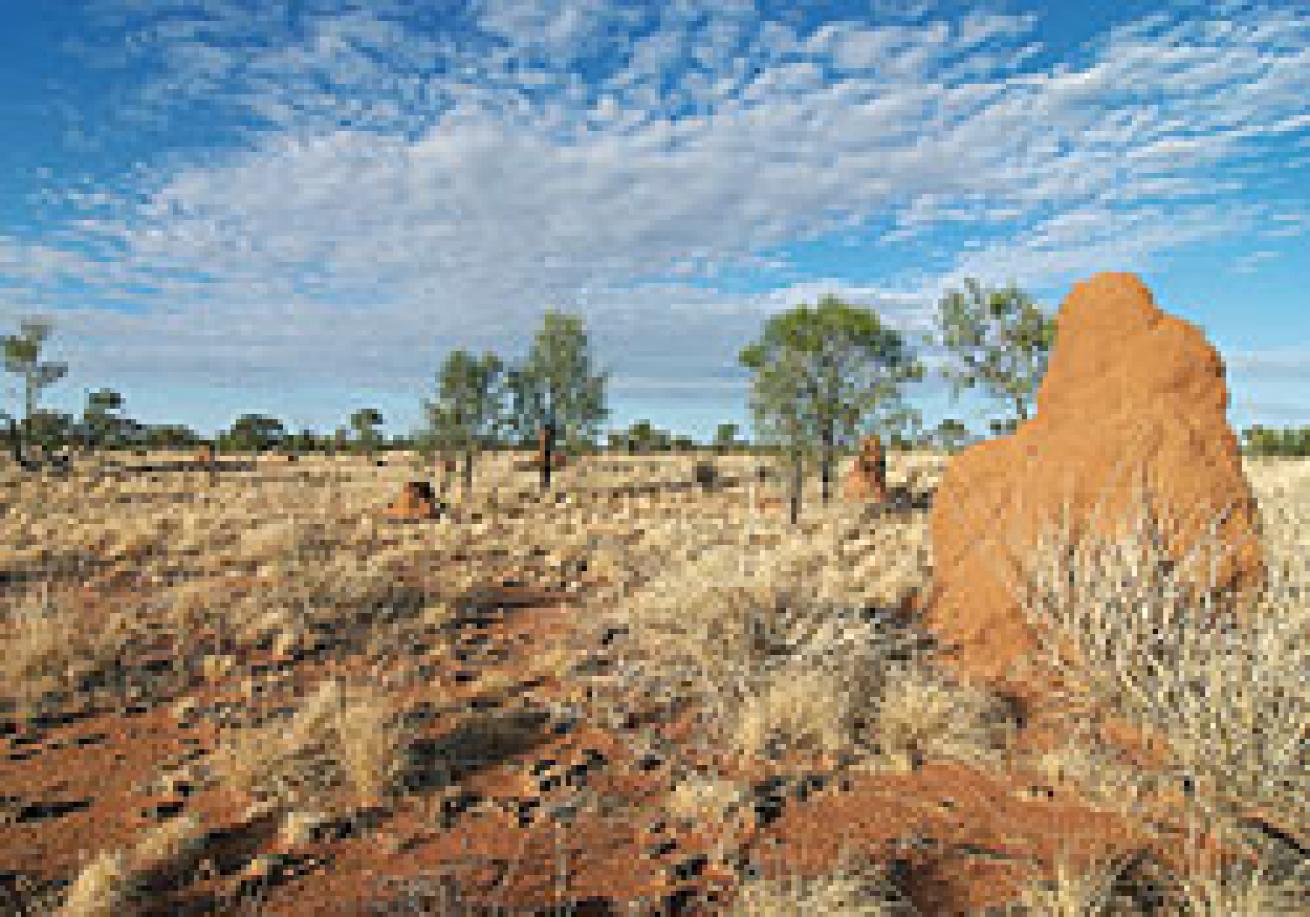
Nick LuceyExtend your Great Barrier Reef trip to include a tour of the Outback.
Dive Sites
Ribbon Reefs
Cod Hole You'll find the eponymous potato cod, but also morays and whitetip reef sharks, as well as schools of sweetlips, gray whalers and bumphead parrotfish.
Cormorant Reef This staghorn coral garden boasts damselfish, Malabar cod, colonies of potato coral (Pavona clavas) and sometimes sea snakes.
Pixie Pinnacle Here you'll see purple and orange anthias, flame file shell, gorgonians, lionfish, occasional barracuda.
Steve's Bommie This pinnacle is orbited by bigeye trevally, anthias, yellow goatfish, lionfish, stonefish and sharks.
Temple of Doom Look for clownfish, fusiliers, surgeonfishes, soft coral gardens and the occasional turtle.
Osprey Reef
Admiralty Cave Named for caves with an anchor, at this site you'll see trevally by day and flashlightfish by night.
Castles Keep your eyes peeled for triggerfish, sharks, turtles and lagoon rays.
Raging Horn The big stuff — whitetip and gray reef sharks and mantas.
North Horn Shark feed, where the diners are whitetip reef sharks, gray whalers, silvertips and hammerheads. You'll also find potato cod, bigeye trevally and bumphead parrotfish.
Silver City The walls here are tended by sharks — sometimes hammerheads — and manta rays.
Travel Savvy
Fly: You'll probably have to overnight in Guam on your way there or back. Flight times are about seven hours from Houston to Honolulu, seven to Guam and another five or so to Cairns. When flying domestically, go light on gear as the baggage allowances are about half of what they are on international flights. If your schedule allows, store your dive gear in the lockers at the airport in Cairns. You don't need to haul your wet BC, regulator and stinky wetsuit around Queensland's Outback.
Bring: A passport that's valid up to six months after your return home, so you won't be able to cut it close with a soon-to-expire ID. You'll also need a visa, which you can apply for online at www.immi.gov.au. It's all done electronically, and the border agent will be able to access your visa electronically ... a great use of new technology.
Carry On: A good travel pillow is worth its weight in gold--I brought Sea to Summit's self-inflating "Luxury Pillow," which was great for keeping weight and space to a minimum.
Read: Read Bill Bryson's hilarious, insightful and self-deprecating In a Sunburned Country prior to your trip, to better understand this vast land and its people.
Remeber: Summer here is winter there and vice versa. Wear sunblock (Australians have the highest rates of skin cancer in the world). Drive on the left.
Listen To: Local acts such as AC/DC to rock it out retro-style, Savage Garden if you're more easy-listening, INXS if you're in a totally rad ‘80s mood, or Midnight Oil for more politically minded prose. And of course, the soothing sounds of the aboriginal didgeridoo.
Eat: Vegemite--spread it thinly and cautiously onto buttered toast. If you're like me, your horror will be followed by a strange delight. Also remember that breakfast here typically consists of eggs, potatoes, tomatoes and a big pile of meat.
Drink: Plenty of water to stay hydrated, especially when diving ... but if you must, try XXXX (pronounced four-ex) Gold on tap, brewed by Queensland's largest brewery, Castlemaine. The beer has little following outside the state, however, where more popular, tastier brews prevail, such as Victoria Bitter (Victoria) and Toohey's (New South Wales).
Glossary
Arvo = Afternoon
Banana Bender = Someone from Queensland
Billabong = Watering hole
Brizzie or BrisVegas = Brisbane
Bundy = Famous rum made in Bundaberg, Queensland
BYO = A restaurant that allows you to bring your own booze
Cheers = Thank you
Dive Kit = Dive gear
G'day = Hello
No Worries = You're welcome
Pot = Basically, a half-pint of beer
Sanger = Sandwich
Schooner = A little less than a pint of beer
Shark Biscuit = Surfing newbie
Stubby Holder = Beer cozy
Togs = Swim suit
XXXX = Four X, a local Queensland beer
InDepth
Weather: Seasons are reversed — December through February is summer; June through August is winter. In the tropical north of Queensland, daytime air temps vary from the 80s in winter to the 90s.
Average Water Temp: Expect water temps in the mid-80s in summer throughout the central and northern Great Barrier Reef, but they drop to a surprisingly cool mid-70s in winter.
Average Visibility: Water clarity inside the Great Barrier Reef is affected by tides and surge, and averages 40 to 60 feet, with an occasional high of 100 feet. Outside the reef, visibility averages a reliable 50 to 100 feet and often soars to more than 200 feet out in the Coral Sea.
Travel Savvy: A passport and visa are required. Short-stay visas can be downloaded at www.eta.immi.gov.au. Nonstop flight time from Los Angeles (LAX) to Brisbane (BNE) and Sydney (SYD) is about 14 hours. Departure tax is usually included in airline ticket price.

